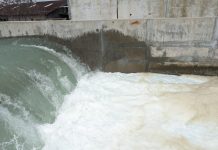India’s 25,000-kilometre-long National Gas Pipeline (NGPL) network is currently operating at only 50% capacity, leading to significant losses for entities in the pipeline infrastructure sector. A Ramana Kumar, a member of the Petroleum and Natural Gas Regulatory Board (PNGRB), highlighted.
Expansion Plans and Utilization Concerns
India plans to add another 10,000 kilometres of natural gas pipelines in the next two to three years. However, Kumar pointed out that some pipelines have a utilization rate of less than ten percent. “We need to analyze why this situation has occurred,” he said. He emphasized that underutilized pipelines result in substantial financial losses for operators.
Need for Demand-Based Planning
Kumar stressed the importance of judicial analysis before planning future pipelines. “Future pipeline projects must undergo a thorough demand assessment, including anchor demand, to ensure optimal utilization,” he said. PNGRB data shows that India has authorized a total of 35,000 kilometres of NGPL network, with 25,000 kilometres currently operational. The pipelines have a carrying capacity of 400 million metric standard cubic meters per day (mmscmd) of natural gas.
City Gas Distribution Networks as Key Growth Drivers
Kumar noted that both the existing and planned pipelines will cover almost 95% of the geographical areas with City Gas Distribution (CGD) networks. With 307 authorized CGD areas, this sector is expected to drive natural gas consumption in India.
Stagnant Growth in Natural Gas Consumption
PNGRB projections indicate that natural gas consumption grew from 131 mmscmd to 188 mmscmd in the financial year 2024, reflecting a compound annual growth rate (CAGR) of just 4.6%. The power sector, the largest consumer of natural gas, saw its consumption decline from 29.8 mmscmd in 2015-16 to 24.81 mmscmd in 2023-24.
Gas-Based Power Plants Struggling
India’s installed gas-based power capacity currently stands at 23.8 GW, but the plant load factor (PLF) is only 14.8% for FY 2023-24. PNGRB data reveals that 31 power plants, with a combined capacity of 14.3 GW, remain stranded.
“When the Krishna-Godavari (KG) basin discovery happened in 2002, expectations were high for an abundant gas supply. As a result, many gas-based power plants were built, particularly along the Andhra coast. However, these plants are now stranded,” PNGRB Chairman Anil Kumar Jain said.
Competition from Coal-Based Power
Jain explained that India’s power market is highly price-sensitive. “Coal-based power is cheaper, so plants operate where Power Purchase Agreements (PPAs) permit. In other cases, operators receive fixed-cost payments while the plants remain shut. Gas-based power generation is only utilized when demand surges and PPAs fail to meet supply requirements,” he added.
The Road Ahead
To maximize pipeline utilization and support stranded power plants, policymakers must focus on strategic planning, demand-based infrastructure development, and competitive pricing mechanisms for natural gas. As reported by thehindubusinessline.com, a well-integrated approach can ensure that the expanding gas pipeline network contributes effectively to India’s energy landscape.

































